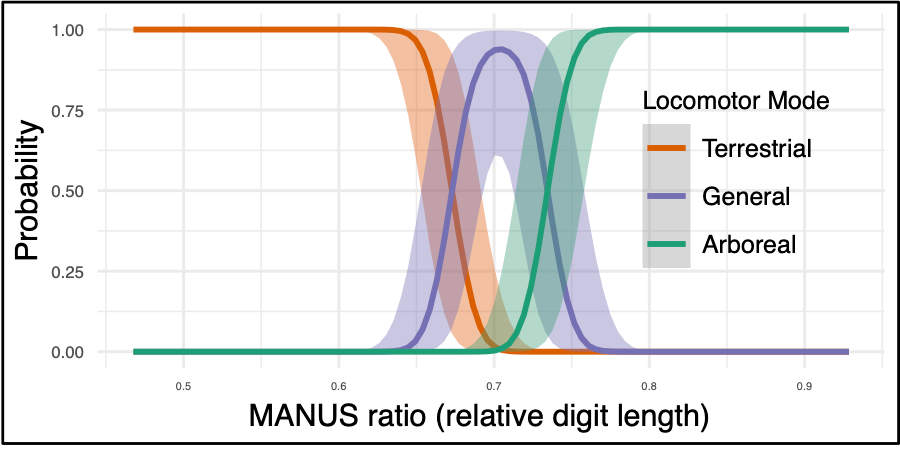
Research Interests:
I am broadly interested in the intrinsic and extrinsic processes that generate species diversity and phenotypic disparity. Most of my work has been with small mammals, especially in the montane tropical regions of Asia and the boreal forest of Alaska.
Much of my research has centered on the morphological evolution in the amazing murine rodent radiation (Murinae, the Eastern Hemisphere rats and mice), ranging from the skeletal adaptations found in climbing species to the accumulation of phenotypic disparity in hyper-diverse island communities. More recently I began working on the “non-adaptive radiation” of Southeast Asian shrews, and the dentition of carnivorans, a classic example of form-to-function. I am especially interested in learning the fundamental theories in evolutionary ecology, and integrating modern comparative methods to classic hypotheses to build upon our knowledge base. I am fond of using Bayesian multilevel modeling in my research, especially in brms and Stan, and I work to integrate analytical methods from other disciplines, such as psychology, sociology, and machine learning, into my work.
The unifying theme of all my research is museum collections. I use a variety of specimen data, from external measurements and locality data to microCT scans of fluid-preserved specimens and hair samples for stable isotopic analysis. I am an active specimen collector, and work in collaboration with several labs in southeast Asia to inventory the astounding diversity in this beautiful yet threatened part of our planet.
Below are a few active research topics:

Small Mammal Arboreality & Morphological Adaptation – Arboreal species represent a single functional guild that has evolved repeatedly in many mammal clades. Climbing introduces a set of physical constraints on vertebrates that require unique phenotypic adaptations. Convergent functional traits in distantly related arboreal species can signify climbing adaptations, which then can be used to predict the locomotion of rarely observed or extinct species. Using Bayesian phylogenetic multilevel models (BPMMs) and skeletal morphology, I found that several measurement ratios can accurately infer climbing, however hand shape and finger length can effectively predict locomotor behavior in murine rodents with exceptional precision, allowing for accurate locomotor inferences across this clade of poorly-studied mammals (Nations et al 2019).
Integrated morphological changes often track with behavioral or ecological transitions, as shown above, but how do these changes affect evolutionary success? Specialization may alter the tempo of diversification by releasing a lineage from limiting ecological factors, or conversely, by constraining a species to an adaptive peak. I used locomotion as a central axis connecting morphology and ecology, I found that the most rapidly diversifying murine clades have a highly conserved, classic “rat-like” body plan which allowed for the successful expansion of murines across the Eastern Hemisphere. Using a time-calibrated phylogenetic hypothesis of Murinae (435 species), and phylogenetic comparative methods, I found that niche transitions toward rare locomotor modes, such as climbing and swimming, lead to both unique morphologies and lower diversification rates, suggesting that these specialized ecologies represent evolutionary “cul-de-sacs” that foster static persistence (Nations et al 2020).

Biogeographic rules in mammals and birds – Ecogeographic rules describe correlations between organismal phenotypes and provide prima facie evidence of adaptation. Along with collaborators, I worked on two important ecogeographical rules: Bergmann’s rule, or the prediction that larger species are found in cooler climates, and Gloger’s rule, the prediction that endotherms are more darkly colored in warm, humid climates. In the endemic murine rodents of Australia, we found that body mass is predictably larger in cool mesic environments, supporting Bergmann’s rule, and that body size tracked climatic changes throughout the Pleistocene (Roycroft, Nations, & Rowe 2020). In Furnariidae, the ovenbirds of Central and South America, we found a previously undescribed interaction between climate and light environment, where the negative effect of precipitation on brightness is strongest in cool temperatures, demonstrating the complexity of phenotypic adaptation to environment (Marcondes, Nations, et al. 2021).
Convergent evolution of functional traits in a “non-adaptive” radiation of Malay Archipelago shrews – Although many biological radiations are famous precisely for their exceptional phenotypic and functional diversity, some “non-adaptive” radiations, such as Southeast Asian shrews, have rapidly diversified to form equally rich communities of remarkably similar-looking species. Interestingly there appear to be similar shrew morphotypes between different islands of the Malay Archipelago (Malaysian Peninsula, Sumatra, Java, Borneo, and Sulawesi). Using micro CT scans of museum collections I am testing for functional differences between species in communities and convergent evolution of these putative morphotypes between islands. Results will either support competition’s role in community assembly by highlighting functional differences in syntopic species, or, suggest that function, as it relates to diet and locomotion, does not play a substantial role in the formation and maintenance of these communities.

Elements of the vertebrate skeleton do not always evolve in a coordinated fashion. Some elements may change shape in correlation, while others remain unchanged or evolve along their own unique trajectories. This modularity has been widely demonstrated in the crania of mammals and birds. While tests for integrated modules have been performed within the cranium and between limb elements, tests for covariance between cranium and a limb modules are rare. However, evidence of covarying skull and limb modules would be consistent with coevolution between feeding strategy and locomotion. I am testing for cranial and postcranial modularity in Malay Archielago shrews with the goal of answering 1) How many modules are in the cranium and post-cranial elements of small mammals? 2) How quickly do these modules evolve? and 3) How strong is the covariance between modules? This ongoing work requires high resolution microCT images of shrew skeletons and a suite of phylogenetic comparative methods.